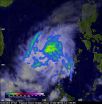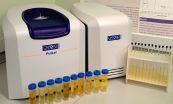Researchers identify genetic mutation responsible for serious disorder common in Inuit
2014-12-01
(Press-News.org) Researchers have identified the cause for a disorder common in Inuit people that prevents the absorption of sucrose, causing gastrointestinal distress and failure to thrive in infants. The study, published in CMAJ (Canadian Medical Association Journal), identified a genetic mutation responsible for the disorder, called congenital sucrose-isomaltase deficiency (CSID).
CSID is a rare disorder in people of European descent, but is more common in Inuit people living in northern Canada, Greenland and Alaska, with rates estimated between 5% and 10%. The disorder prevents the body from absorbing particular sugars, especially sucrose, and generally presents after weaning with the introduction of sucrose-containing foods to an infant's diet. Breastfed infants are usually without symptoms.
Researchers isolated DNA from the blood of a child from Baffin Island in Nunavut, Canada's largest territory, in whom severe chronic diarrhea developed while taking sucrose-containing infant formula. They then sequenced the sucrose-isomaltase (SI) gene in this child to identify the specific genetic mutation responsible for the disorder. The same mutation occurred in about 3% of healthy Inuit control individuals living in Canada's Arctic, which led the team to conclude that a common 'founder' mutation is responsible for the high prevalence of CSID in people of Inuit descent. Until this study, a common mutation for the disorder had not been identified.
"People with CSID may remain asymptomatic unless they consume sucrose, which is why persons consuming a Western diet are more likely to become ill," said Dr. Matthew Lines, Department of Pediatrics, University of Ottawa and Children's Hospital of Eastern Ontario (CHEO), Ottawa, Ontario, Canada. "Timely recognition of this condition and initiation of appropriate therapy is paramount. Our study should prompt physicians to consider CSID, and to review the sucrose content of a patient's diet, and specifically that of infant formula if applicable."
Dr. Lines added that as result of the research team's findings CSID, which formerly required an intestinal biopsy for diagnosis, can now be diagnosed with a simple blood test.
INFORMATION:
The study was conducted by researchers from the Children's Hospital of Eastern Ontario (CHEO) Research Institute and University of Ottawa, Ontario, Canada; Schulich School of Medicine and Dentistry, Western University, London, Ontario, Canada; and University of Washington, Seattle, Washington, United States, also in partnership with Robarts Research Institute, London, Ontario.
ELSE PRESS RELEASES FROM THIS DATE:
2014-12-01
In recent years, cilia, microscopic, tentacle-like extensions from biological cells, have risen from relative obscurity and are now considered important to the understanding of many human afflictions. In a December BioScience article, George B. Witman, of the University of Massachusetts Medical School, and Jason M. Brown, of Salem State University, describe recent discoveries involving cilia-related diseases (called "ciliopathies") and highlight "model" species that could be useful for systematic study of ciliopathies.
Cilia perform a broad range of functions, including ...
2014-12-01
Tropical Storm Sinlaku made landfall in east-central Vietnam bringing some moderate to heavy rainfall with it. NASA and the Japan Aerospace Exploration Agency's TRMM and GPM satellites analyzed the rainfall rates occurring in Sinlaku before it made landfall while NASA's Terra satellite spotted the storm as it came ashore in Vietnam.
Tropical Storm Sinlaku formed on November 26, 2014 over the southeastern Philippines. As a tropical depression Sinlaku caused flooding in areas of the Visayas and Mindanao. The storm then moved west and crossed the South China Sea where it ...
2014-12-01
Scientists at the Institute of Food Research on the Norwich Research Park have teamed up with Oxford Instruments to develop a fast, cheap alternative to DNA testing as a means of distinguishing horse meat from beef. Because horses and cattle have different digestive systems, the fat components of the two meats have different fatty acid compositions, as the team report in the journal 'Food Chemistry'. The new method looks at differences in the chemical composition of the fat in the meats, using similar technology to a hospital MRI scanner.
In just ten minutes, a technician ...
2014-12-01
December 1, 2014 - The health departments of the nation's largest cities play a central role in developing innovative population health strategies for improving public health across the United States, according to a special January issue of the Journal of Public Health Management and Practice. The journal is published by Lippincott Williams & Wilkins, a part of Wolters Kluwer Health.
"Indeed, cities are at the forefront in extending public health and social policy to realize changes in our environment abetting population health," according to a commentary by Lloyd F. ...
2014-12-01
ROSEMONT, Ill.--Prompt and appropriate treatment of a dislocated shoulder--when the head of the upper arm bone (humerus) is completely knocked out of the shoulder socket (glenoid)--can minimize risk for future dislocations as well as the effects of related bone, muscle and nerve injuries, according to a literature review appearing in the December issue of the Journal of the American Academy of Orthopaedic Surgeons (JAAOS).
The shoulder has the greatest range of motion of any joint in the human body and is the most common site for a full or partial dislocation. Shoulder ...
2014-12-01
This news release is available in German. Ideally, diamonds consist of pure carbon. But natural diamonds always contain defects. The most researched defects are nitrogen-vacancy centers comprising a nitrogen atom and a vacancy. These might serve as highly sensitive sensors or as register components for quantum computers. However, until now it has not been possible to extract the optically stored information electronically.
A team headed by Professor Alexander Holleitner, physicist at the TU München and Frank Koppens, physics professor at the Institut de Ciencies ...
2014-12-01
Conflicting evidence about the extent to which men's semen quality declines with age--likely lowering their fertility--is being cleared up by new University of Otago, New Zealand, research that has collated and reviewed data from 90 previous studies from around the world.
After conducting a systematic review and meta-analysis of the studies' data, researchers from the University's Departments of Zoology and Anatomy found consistent age-related declines in semen volume and sperm performance and increases in malformed and DNA-damaged sperm. Semen quality is regarded as ...
2014-12-01
Singapore--Scientists at A*STAR's Genome Institute of Singapore (GIS), in collaboration with local clinicians and colleagues in the USA, have identified a biomarker which is strongly associated with triple negative breast cancer (TNBC), a highly aggressive carcinoma that often has early relapse and metastasis following chemotherapy. The newly identified biomarker, a gene called RASAL2, provides a target for developing new therapeutics designed to treat this often deadly disease.
TNBC is deadly because, unlike other types of breast cancers such as estrogen receptor (ER) ...
2014-12-01
Personalized medicine uses methods of molecular analysis, especially genetic sequencing and transcription, in order to simultaneously identify genetic mutations to evaluate each individual's risk of contracting a given disease. It seems that there is more than a single mechanism at hand, as proven by the work of a team of geneticists at the University of Geneva's (UNIGE) Faculty of Medicine, and the Swiss Institute for Bioinformatics (SIB). They have sequenced the RNA of 400 pairs of twins; with this information, they can quantify the roles of both genetic and environmental ...
2014-12-01
HOUSTON -- (Dec. 1, 2014) - Most genes are inherited as two working copies, one from the mother and one from the father. However, in a few instances, a gene is imprinted, which means that one copy is silenced. This is called genomic imprinting. If the active copy is mutated, then disease results, even though the silenced gene copy may be normal.
Angelman syndrome, which causes learning difficulties, speech problems, seizures, jerky movements and an unusually happy disposition, results when a gene inherited from the mother in a particular area of chromosome 15 is mutated ...
LAST 30 PRESS RELEASES:
[Press-News.org] Researchers identify genetic mutation responsible for serious disorder common in Inuit


